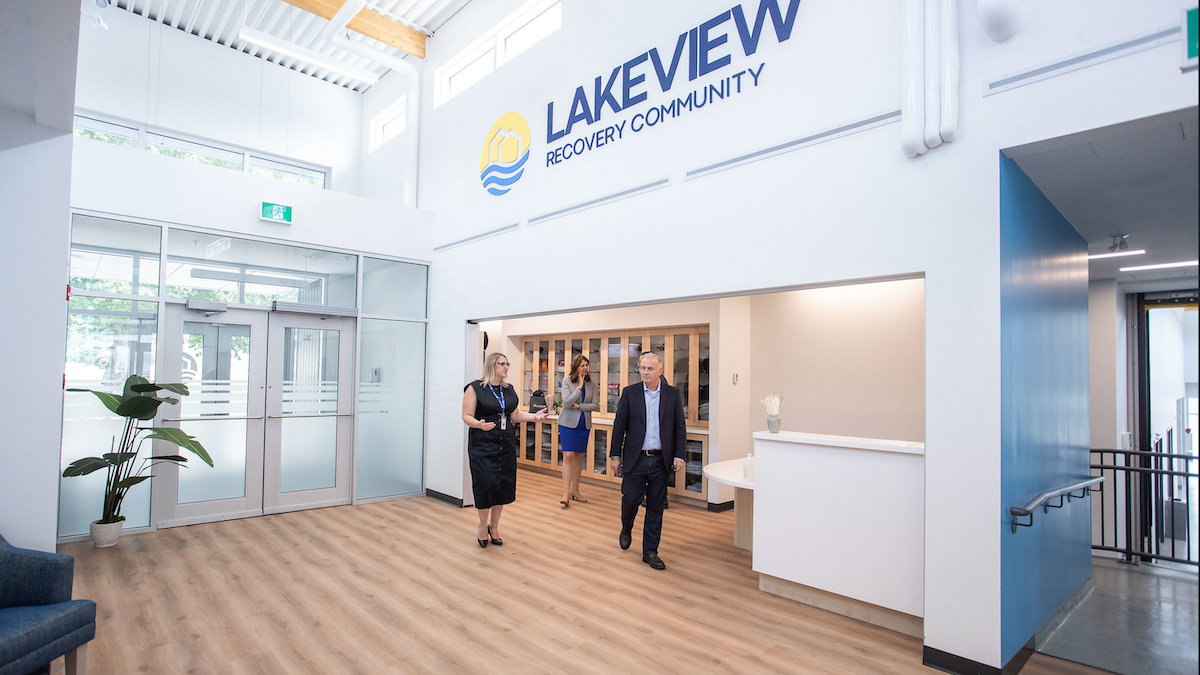Thursday’s Alberta Government news release announcing the official opening of so-called Lakeview Recovery Community in a rural area west of Edmonton included the intriguing tidbit that the facility will also be home to the “Recovery Training Institute of Alberta (RTIA).”
“The RTIA is a provincial training hub for those employed within a recovery community or other treatment centre in Alberta,” the news release confidently stated. “It will provide an environment for hands-on learning with full immersion into the work of addiction treatment.
“With the RTIA, Alberta’s government is creating a workforce of people who are well-educated and trained in the sector,” that section of the release immediately concluded.
A short quote attributed to RTIA Executive Director Bill Caldwell of Vancouver Island added that “for people to succeed in recovery, it is important they have a team surrounding them, which is what we are creating at the Recovery Training Institute of Alberta.”
“We are helping create a culture of recovery across the entire province, thanks to the work done at the RTIA and the support of Alberta’s government,” Caldwell’s canned quote concluded.
Obviously, this interesting digression from the main theme of the release raises more questions than it answers.
For example, what is the legal structure of the RTIA? Is it recognized under the Post-Secondary Learning Act or any other provincial legislation or regulation? Is it incorporated as a company or a society?
Who drafted its curriculum? Are its courses overseen by an accredited Alberta university as was the practice back in the day when a plethora of private religious colleges operated on the fringes of academia out here in Wild Rose Country? (Almost certainly not, but we don’t really know.)
Don’t look for answers in the news release. A note seeking more information to Addiction Minister Dan Williams’ press secretary went unanswered yesterday.
Clearly the RTIA’s function is to create a workforce empowered to act only within the ideological constraints of the “Alberta Recovery Model” championed by the Smith Government, a phrase said to have been coined by Carson McPherson, president of ROSC Solutions Group Inc., the private company hired by the government to operate the Lakeview Recovery Community.
Indeed, on its website the RTIA proclaims that “we envision elevating the Alberta Model to global acclaim.”
If there is a corporate or contractual connection between ROSC Solutions and the RTIA, this too remains unanswered.
While it is clear the RTIA offers instruction online and some “recovery coach academies” at locations in Alberta, it is less clear who will be instructing these courses, whether a formal credential will be awarded upon a student’s completion of a course of program, or what tuition will be for the eight-week online program described in the website.
A page on the RTIA website describes the entity’s faculty.
Of the 10 individuals named on the page, one of whom is identified only as a team member, five appear to live outside Canada (one for a spell in the US Army’s maximum-security prison at Fort Leavenworth, Kansas), three and possibly four like Caldwell hail from Vancouver Island, and one from Saskatchewan.
Three have appointments at well-known academic institutions; five are connected to the corporate addiction recovery businesses, mostly on Vancouver Island; two appear to be on the U.S. inspirational speaking and TV expert circuit; and two are of former employees of Cedars Cobble Hill, the abstinence-based private addiction treatment centre on Vancouver Island that also once employed Caldwell, ROSC Solutions CEO Carson McPherson, and Alberta Premier Danielle Smith’s chief of staff, Marshall Smith.
So this “faculty” seems more like an advisory board or council than a faculty, in the sense of the term as used at a college or university. Will any of these faculty members actually teach courses at the RTIA?
Who selected the faculty members, and what was the criteria for their selection?
Are they compensated for their work, and if so, how much and for what duties?
What will the annual cost to Alberta taxpayers be for their efforts, and those of Caldwell?
Indeed, since the RTIA website says in one place that Caldwell is the RTIA’s executive director and in another says that position is held by one Rob Pearson, PhD, which one is it? Or are they both executive directors?
Alas, I have no answers for you just yet.



